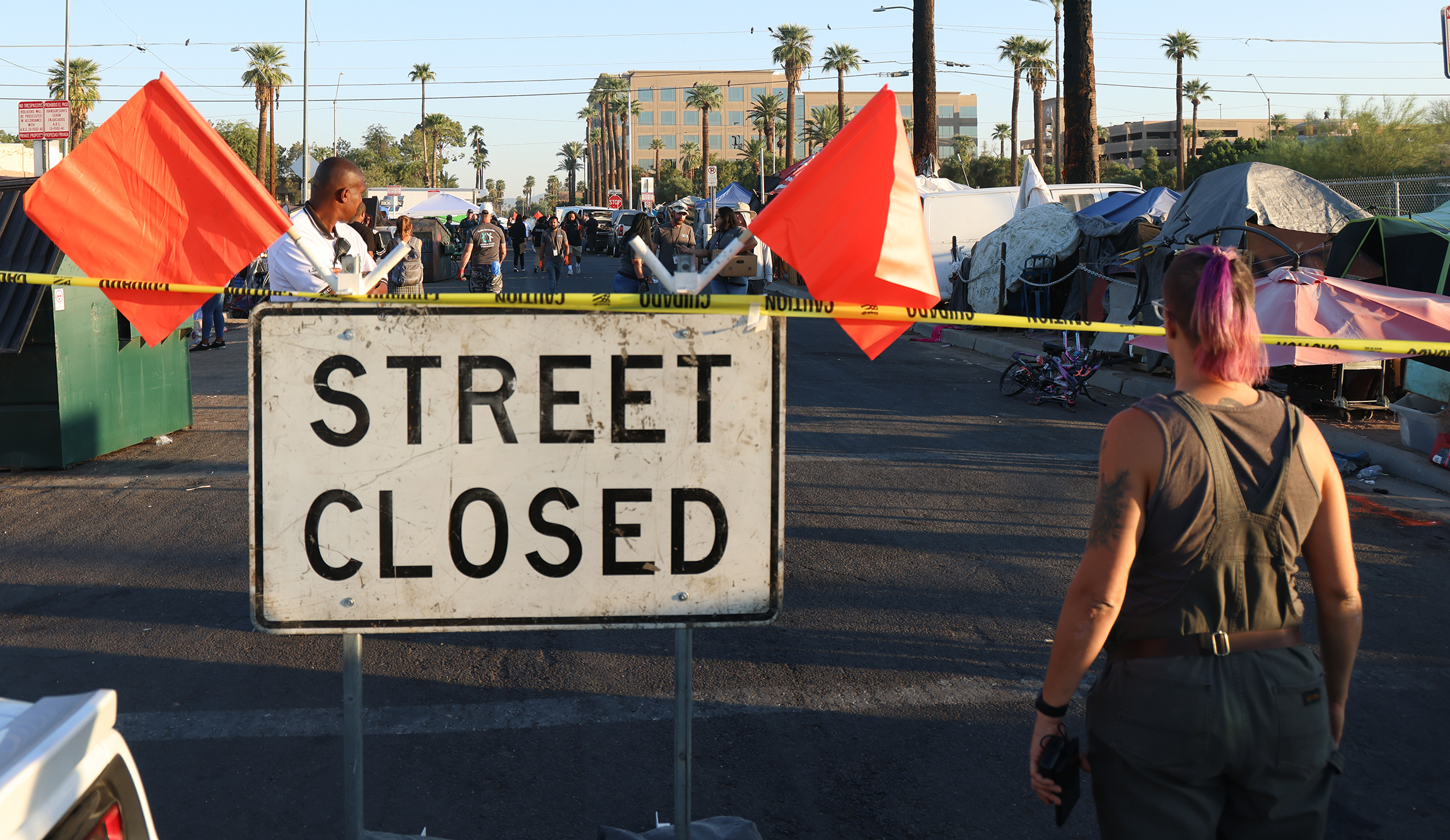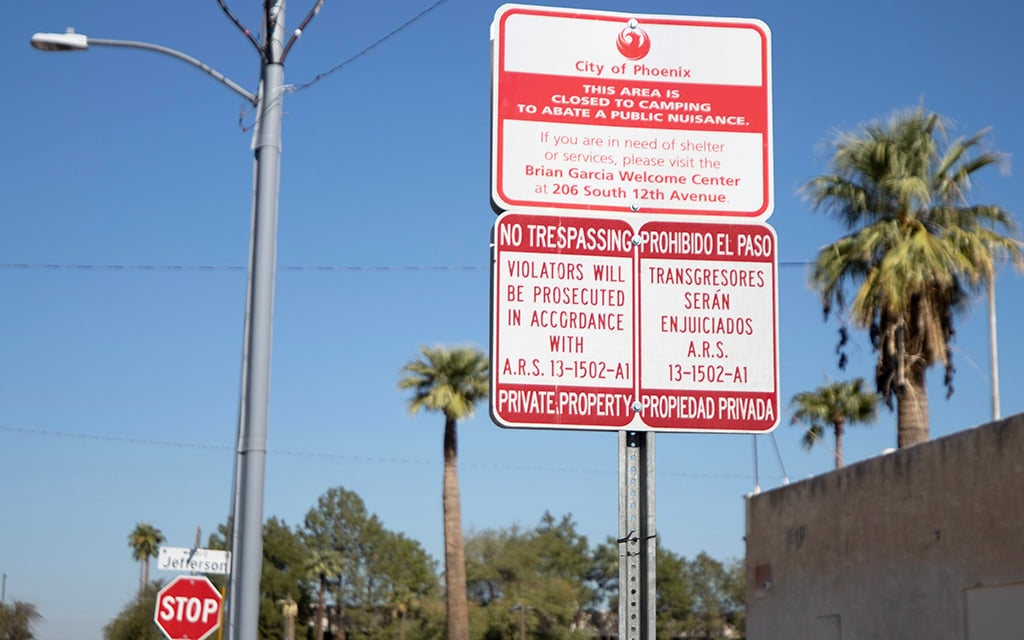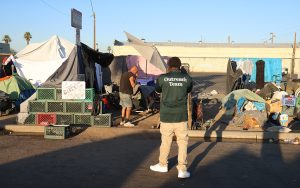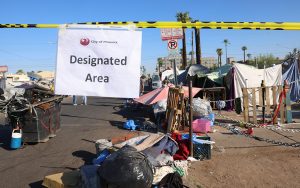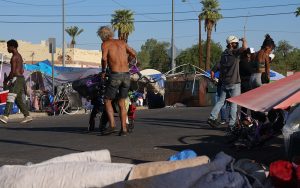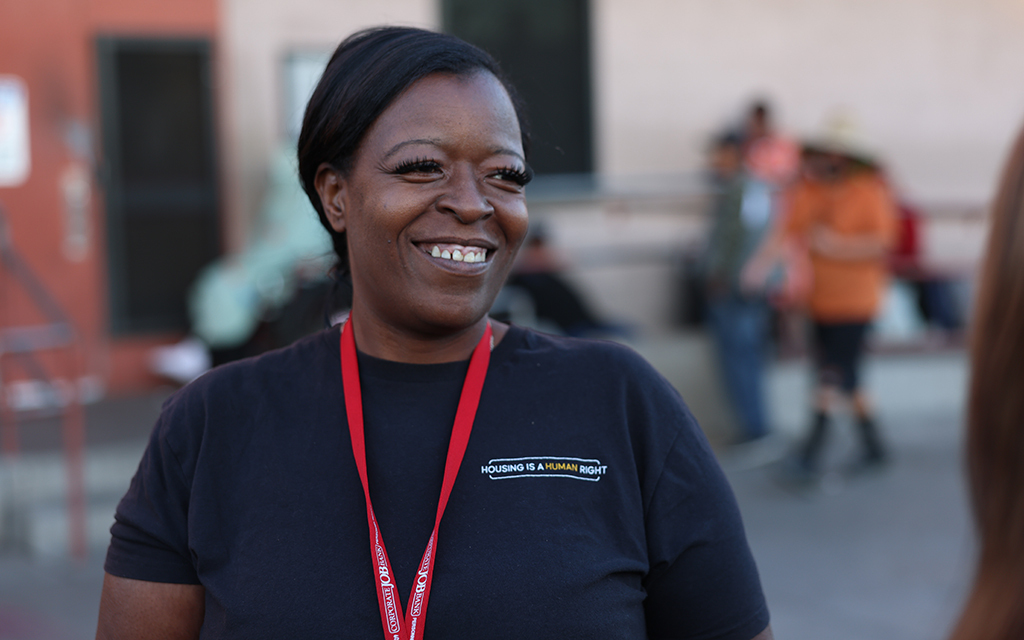PHOENIX – This past spring, the city of Phoenix was court-ordered to clear out its largest homeless encampment, The Zone. The city’s Office of Homeless Solutions had to tackle the difficult, oftentimes painful and complicated issue of moving nearly 1,000 unhoused people, and their possessions, off the streets where some had been living for years.
The area of The Zone that the city was responsible to clear took up roughly 15 city blocks from Seventh Avenue to 15th Avenue and Van Buren Street to Grant Street in downtown Phoenix. It was filled with tents, handmade shelters, platforms and tarps. The residents there included some who were 17, as well as younger children with their families, but the majority were 25 and older.
In March, after several property owners and businesses near the encampment sued the city for safety and health concerns, Maricopa County Superior Court Judge Scott Blaney ruled that the city had to clear out the makeshift shelters and show proof of its efforts at a follow-up hearing on July 10. In a September ruling, Judge Blaney gave a deadline of Nov. 4 to have all 15 blocks cleared.
Phoenix officials say the people encamped in The Zone were notified before city crews showed up to clear them out. The city received help from the Human Services Campus (HSC), a collaborative force of 16 partner organizations with a shared goal to end homelessness. The HSC says its people worked hard to notify people, block by block, in advance of the city’s clearing schedule.
However, the people living in The Zone who were interviewed for this article said they had no advance notice that they were being moved, and they weren’t given options on where to go.
Amy Schwabenlender, CEO of the HSC, said there could be many reasons why people claim they weren’t notified. She said the HSC would go out at different times each day and some homeless people could have been missed if they weren’t there at that time. She also said those with substance use disorders might not have understood or remembered what they were told. And some, she said, might be angry and want to put the city and organizations in a bad light.
This story contains comments from some of the people as they were being cleared out of The Zone. Their life stories are not verified but they give some perspective of what this process has been like for them.
Maria Concepción Walters, 56, said she was released from jail on Oct. 19, the night before she found out she was being forced to move. She said she had been living on the corner of a side street in The Zone for the past six years; at 7 a.m. on Oct. 20, city workers showed up and told her she needed to clear her stuff out. She said she had no idea this was going to happen.
She put her dog in its cage and began throwing unwanted things on the street: tarp, trash, wood used for shelter, a worn-out mattress. She took a hand broom and swept the dirt where she once lived. “I want to sue the whole city,” she said with frustration. “They ask about our income and if we don’t have any, they help the others first and it hurts my feelings.” She said her next step is to go to a hotel for now.
